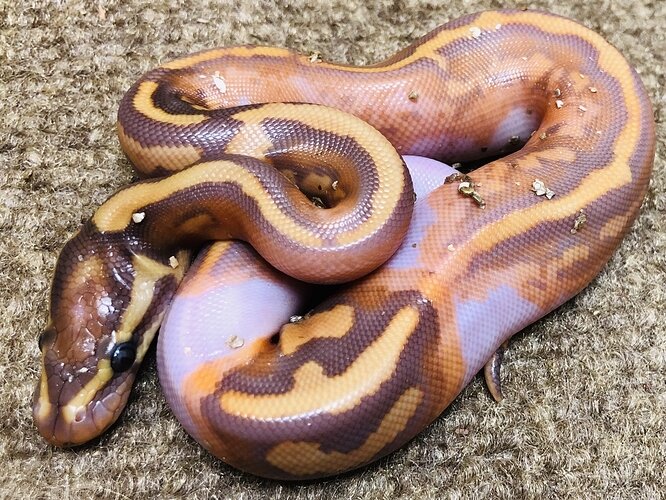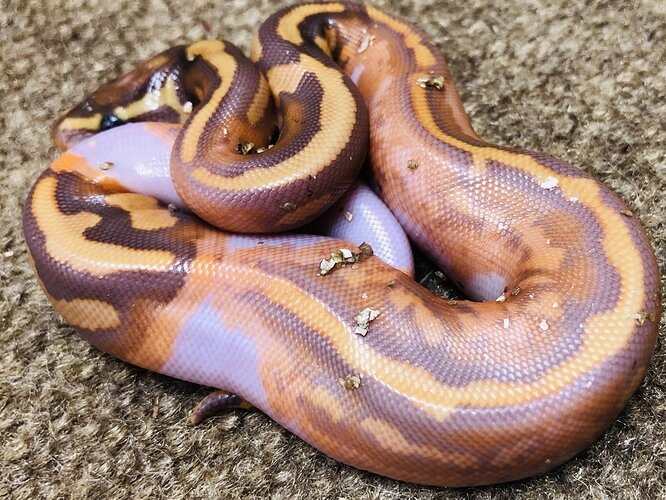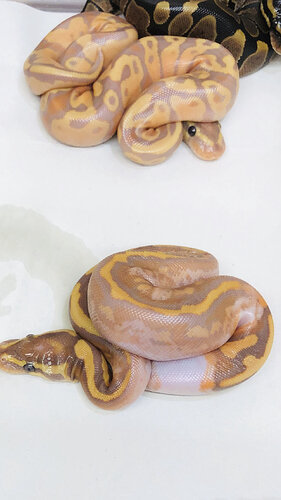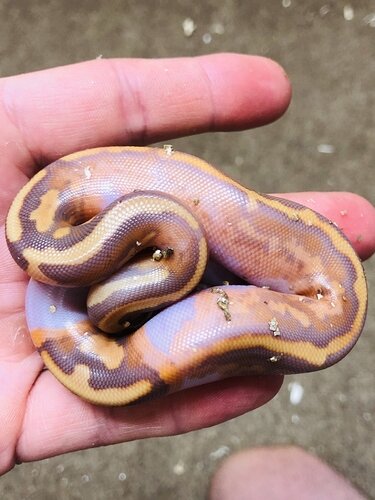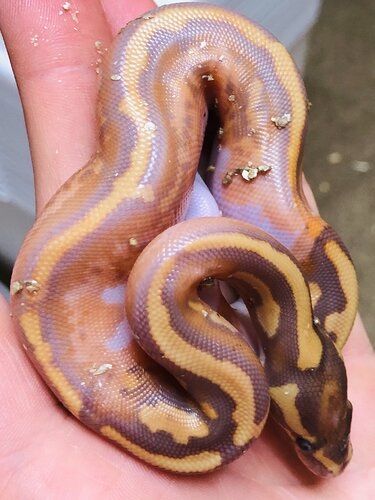So I’ve posted pictures in my hatchlings post but wanted to separate this guy and see what everyone thinks about the difference is banana coloration, is it really two toned does this happen with these forms of combinations. He is Banana Yellowbelly Pied
I was going to say paradox but usually pied paradox the paradox is the white part. From what I’ve ever seen. The two tone is pretty cool though. That’s a keeper for youI’m hoping
I really love the change over from dark coloration to ghost-like coloration. It makes me wonder what’s doing this.
Are you sure? Just imagine if that’s like a possible recurring thing. Maybe you want to keep it in your collection for later. But that is up to you, all respect.
That is not actually correct. Paradox refers to color or pigmentation where it shouldn’t be and typically reverts back to it’s base form or will show one of the morphs in the animal. This is a malufunction of the genes and you can not recreate it.
Pied is a complete lack of pigmentation in the animal in that area. Also this is genetic and can be recreated with any animal carrying the pied genetics.
Really amazing looking animal. Congrats. I would keep that one for sure
Thank you to all who have replied publicly and privately.
I stated my experiences. Glad you chimed in. Thanks!!
Piebald is a proven genetic recessive gene.
Paradox is random and so far has not been proven to be genetic. Some lines may display paradox more often, but so far it’s not been able to be reproduced enough to be able to call it genetic.
Piebalds are not a paradox in any experience, that is a fact, not an opinion.
I don’t think this is paradox. It’s showing all genes as it’s supposed to, I’m just curious about how part of this expresses a darker banana than the other. Only the next few weeks will tell if it’s permanent or going to change after shedding.
Remember the blue ghost? It was born looking like a fire but changed after shedding. Calico Reticulated pythons are born normal and somewhere when they hit maturity they change color right after shedding.
This would be very cool if it’s a trait that does that.
That would be very interesting if it’s was similar to the blue ghost ball and calico retic.
Only time will tell with breeding.
I’m not sure that’s paradox or not. It’s definitely unique but hard to say what it is.
Technically it does classify as a paradox in the meaning of the word, but if you prove it to be genetic, it’s something entirely different.
Very cool snake either way, and definitely a conversation starter.
I’m grateful you put into words what I was referring to as What would be the paradox! Thanks!
I think you misunderstood me, or maybe I misunderstood you? Explain how I put into words what your were trying to say?
We’re you referring to when a pied has a paradox, it’s usually in the white part of the snake?
Very cool snake; regardless if it’s a paradox or not. Definitely a keeper! 
After looking at that photo more, I don’t think it’s paradox. The pattern is displayed equally down the entire dorsal of that snake.
I think that’s different tones for sure you have there.
Now as to why this happened maybe @t_h_wyman or @osbornereptiles could add their knowledge?
Either way, that’s one of the best pieds I’ve ever seen!
I actually think it is possible this animal may be paradox… @sickpyth7, what was the pairing?
Could it be a chimera? It sure looks like two snakes to me. It’s really interesting and beautiful. One of a kind.
Chimera would fall under the umbrella of “paradox”
I thought paradox was random spotting and a chimera was two twins that became one snake. I didn’t know they were related.
